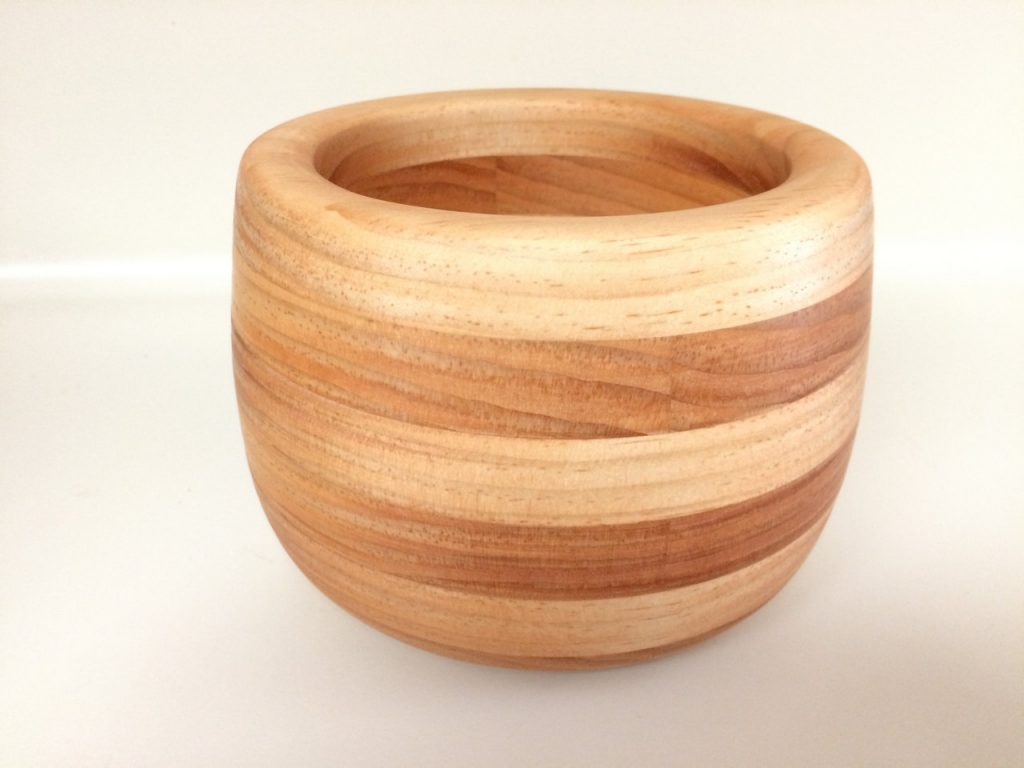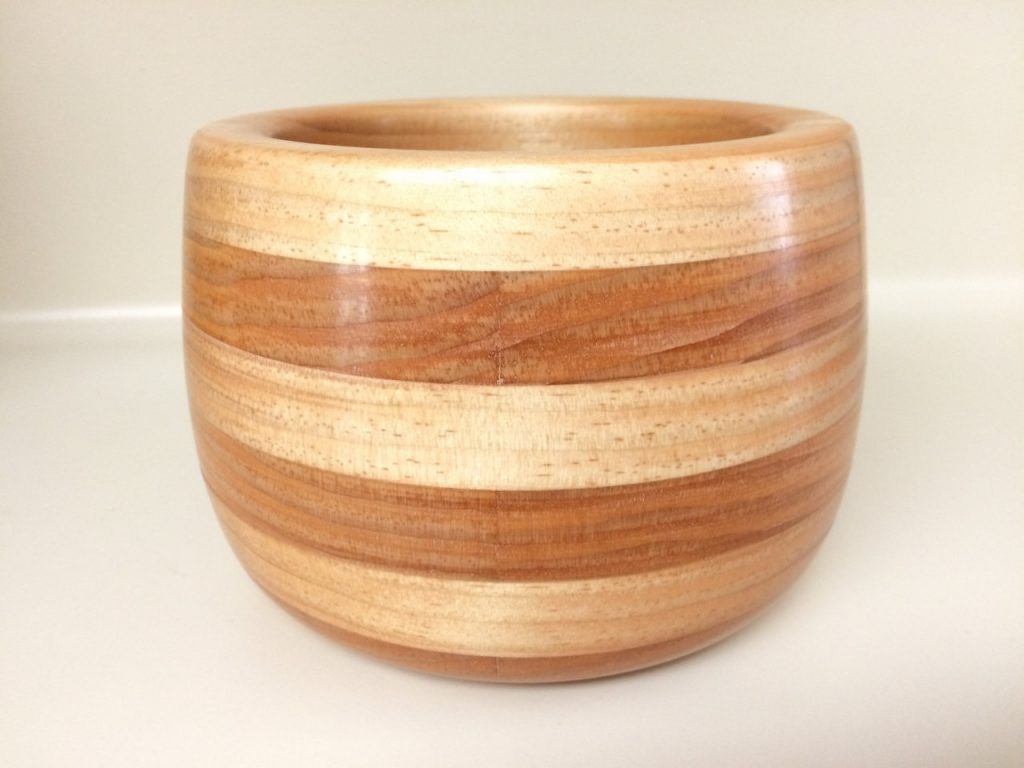Hut Wax PPP — A Fast and Easy Bowl Finish

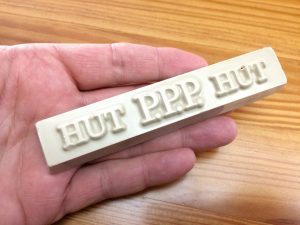
Hut Wax PPP, which stands for “Perfect Pen Polish”, is a food safe wax finishing system for decorative bowls, pens, and small turnings. It’s easy to apply and requires no drying time, and you can completely finish a bowl in around 30 minutes. Also, it can be applied over an oil finish like linseed oil or over stain. It’s not a particularly durable finish so it would be unsuitable for something that will have frequent handling. Any wax will wear away if handled repeatedly, so you can expect that if you use it on pens. But it’s a very nice close-to-the-wood finish that looks great, and this particular formulation will provide a little better water resistance than some wax finishes.
What is Hut Wax PPP?
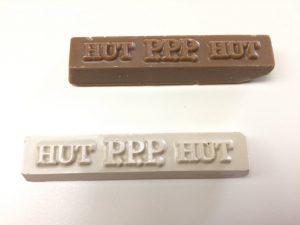
Hut Wax PPP is a two part system, the first part being a brown bar of carnauba wax containing Tripoli polish and the second is a white bar of carnauba wax containing White Diamond polish. It is a “friction polish” and as such requires the workpiece to be spinning when it is applied. In this case the goal is to actually melt the wax onto the workpiece using friction generated heat.
The brown bar, if used alone, will give a nice satin finish to your project. The second part, the white bar, is used after the brown bar to give the bowl a higher gloss.
From my experience the higher gloss from the white bar is only marginally shinier. Maybe your experience will be different, but regardless I’ve been very satisfied with the results using both.

Bowl with 3 coats of prepolymerized linseed oil, prior to finishing with Hut Wax PPP
Bowl after finishing with Hut Wax PP
How is Hut Wax PPP applied?
As previously mentioned Hut Wax PPP must be applied while the workpiece is spinning. Supposedly it can also be applied with a buffer, but I don’t see how this would be nearly as effective or as easy as applying it to a bowl spinning on a lathe.
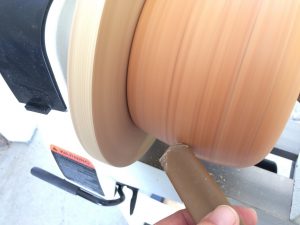
So let’s begin with our bowl mounted and spinning. The lathe speed must be fast. I set mine to spin around 1750 rpm, but you can experiment to see what works best for you.
The first step is to apply wax using the brown Tripoli/carnauba bar. At this point all you’re trying to do is get wax on the bowl so that it can be melted in later. That’s what I’m doing in the photo to the right.
Move the bar back and forth across the bowl, stopping occasionally to look for wax deposited on the surface. You don’t need complete coverage, and you probably won’t get that, but you need enough distributed across the bowl that it will blend together and give complete coverage when you begin the melting process.
Once you’re satisfied that you have enough on the bowl you can melt it in. To do this fold a paper towel several times and hold it against the spinning bowl.
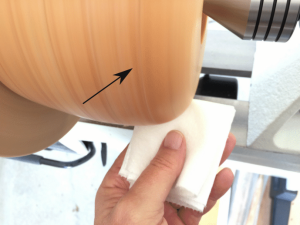
If it does not get hot enough to be uncomfortable on your finger you’re probably not applying quite enough pressure, and you’re likely not melting the wax.
A word of caution here. Never use a cloth to perform this step. If the paper towel snags on your chuck or something else it will simply tear away. A cloth might take your finger with it.
When the wax begins to melt you will see a “melt line” begin to form. Chase that line slowly across the entire surface of the bowl. In the picture above you can see the melt line at the arrow, where the color begins to change.
Repeat using a clean paper towel until no more wax appears on the towel. At this point you can move to the white bar and repeat the process—apply the wax and melt it in.
Cost for both bars is around $10 – $12, and they last quite a while.
Happy finishing!
